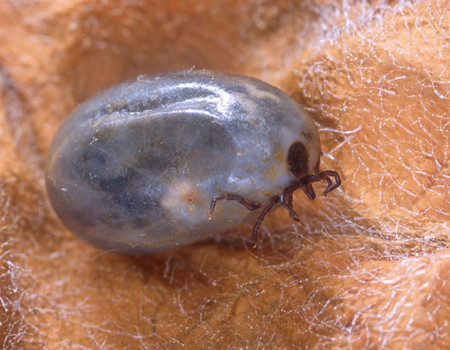Ixodes scapularis - Deer Tick
Blood. It's what's for dinner.
It isn’t anything new to hear that ticks are blood suckers. They feed by climbing onto their host and inserting their mouth parts (Capitulum) into the skin of that host. These mouth parts have tiny spikes or ridges that point backward on them, which is why it is so difficult to remove a tick! The larval ticks normally feed on smaller mammals for example mice or birds, nymph ticks feed on medium sized animals such as mice, rabbits, pets, people, and other warm-blooded animals. Adult deer ticks feed primarily on larger animals such as deer and humans. Deer ticks can acquire the bacteria, Borrelia burgdorferi , which is the cause of Lyme's disease, at any time if they feed on a host who is also infected with the disease.
Deer ticks can live for two years and in that time will have about three meals. A meal is necessary for a tick to move to each stage of it's life. They are very slow eaters and will feed on their host for three to five days and then when they are full (swelling up to about twice their normal size), they will release, drop off their host onto the forest floor, and go into a dormant phase until the next spring. They use the forest floor, grass and leaves to protect them during the winter. Deer ticks have a closed circulatory system, which is what is used to transport food internally. They have to store nutrients after each meal since they go into their dormant phase after feeding.
